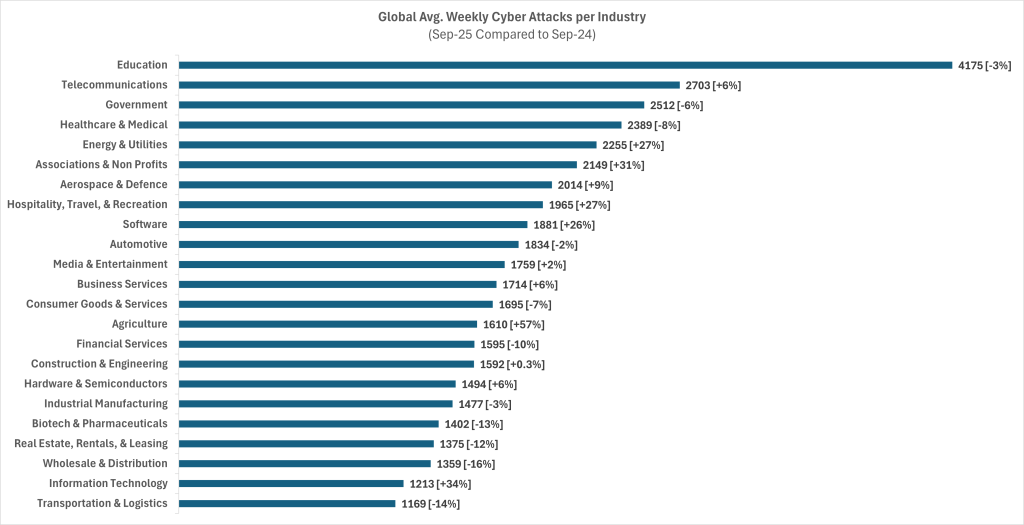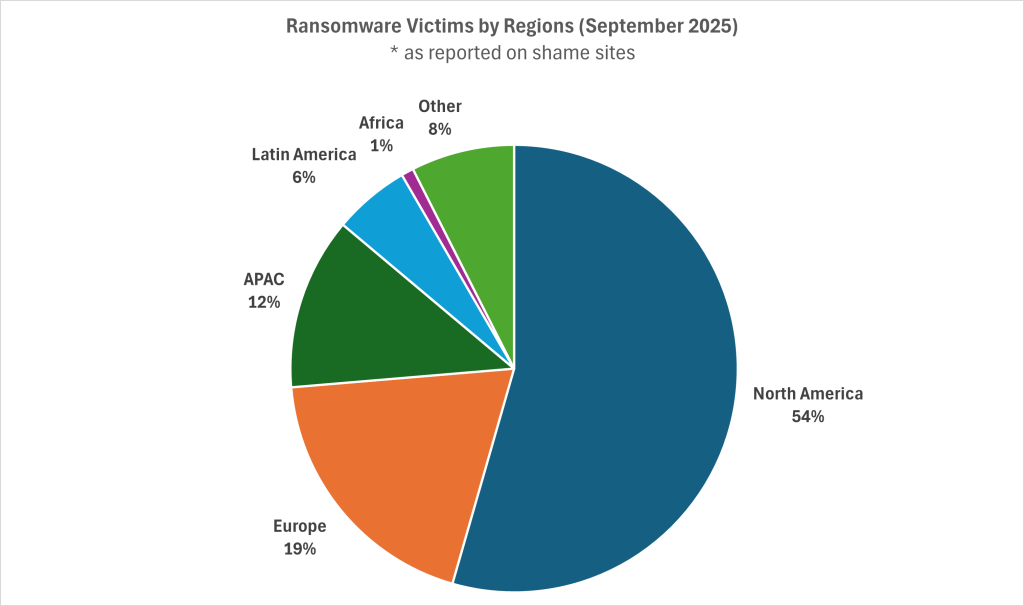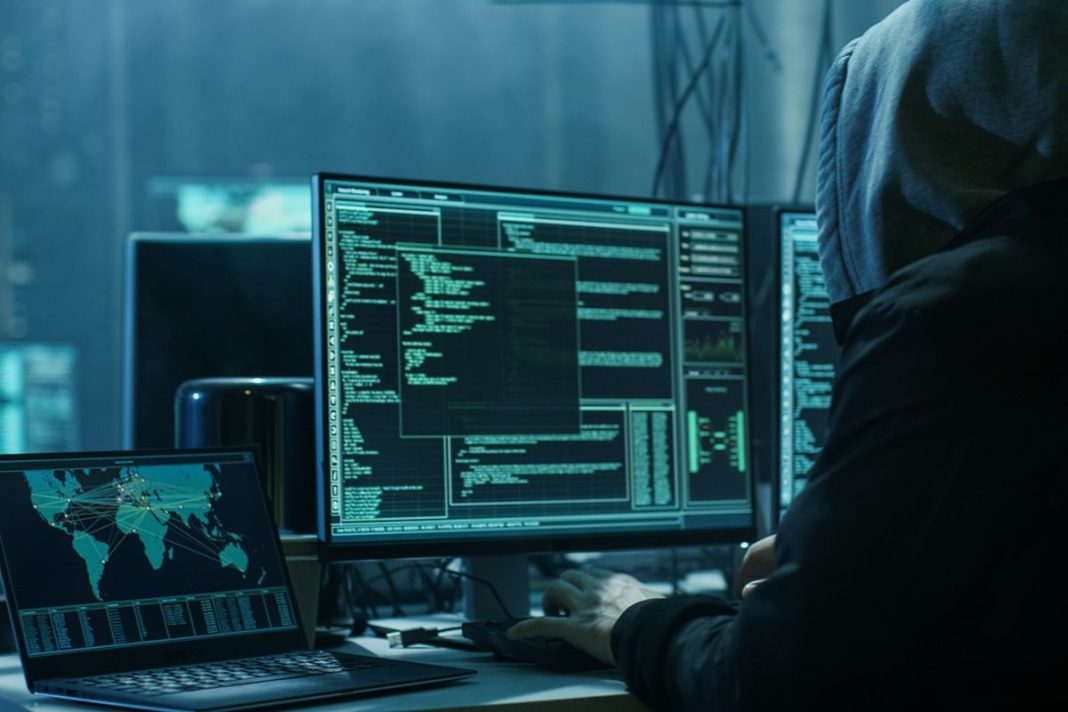Check Point Research, the threat intelligence arm of Check Point Software Technologies, has released its Global Threat Intelligence Report for September 2025, showing Africa once again as being the most targeted region for cyber attacks, with an average of 2,902 attacks per organisation per week.
Telecommunications, government, and consumer goods and services led in terms of industries most targeted on the continent.
Angola was the most attacked in September with 3,045 weekly attacks per organisation (-54% YoY), followed by Kenya with 3,000 (-21% YoY), Nigeria with 2,749 (-32% YoY) and South Africa with 2054 (+26% YoY).
The report also shows that organisations worldwide each faced an average of 1,900 cyberattacks per week.
“As Africans, we are deeply concerned about the continent’s vulnerability to cyber attacks. Especially as many of the attacks in September were prompted by the use of Generative AI,” said regional director for Africa at Check Point Software Technologies, Lorna Hardie.
“The only sustainable defense is a prevention-first strategy powered by real-time AI, ensuring protection across the network, cloud, endpoints, and identities. Only through this approach can organisations stay ahead and protect critical operations from relentless adversaries,” she added.
GenAI introduces new data exposure risks while education sector still most targeted
With the rising use of Generative AI (GenAI) across all sectors, Check Point Research identified emerging risk from GenAI adoption: 1 in every 54 GenAI prompts from enterprise environments posed a high risk of sensitive data leakage, impacting 91% of organisations that use GenAI tools regularly.
An additional 15% of prompts contained potentially sensitive information, such as customer details, proprietary code, or internal communications, underscoring the growing need for AI governance and data protection measures.
Looking at impact on the sectors – the education sector once again was the most targeted globally, experiencing an average of 4,175 weekly attacks per organisation in September (–3% YoY).
This consistent targeting reflects both the sector’s rapid digital transformation — which expands its attack surface — and its typically underfunded cyber security defenses, which make it a frequent and easy target for cybercriminals.
The telecommunications industry, vital to business continuity and consumer connectivity, suffered 2,703 weekly attacks per organisation (+6% YoY), highlighting its dual role as critical infrastructure and an access point to downstream targets.
Government institutions, a long-standing focus for both criminal and nation-state actors, recorded 2,512 weekly attacks (–6% YoY).
While regionally, Africa reported the highest average number of weekly cyberattacks per organisation, no continent was spared. Latin America had an average of 2,826 per organisation per week (+7% YoY), APAC 2,668 (–10% YoY) with Europe registering 1,577 weekly attacks (–1% YoY), while North America stood out with a 17% year-over-year surge to 1,468 weekly attacks, driven in part by a sharp increase in ransomware incidents.
Ransomware threat landscape: North America leads in attack growth
Ransomware remained one of the most disruptive and financially damaging cyber threats, with 562 publicly reported incidents globally in September, up 46% year-over-year.
North America was the most affected region, accounting for 54% of reported cases, followed by Europe (19%).
By industry, the Construction & Engineering sector was the most impacted sector by ransomware, representing 11.4% of reported victims, closely followed by business services (11%) and industrial manufacturing (10.1%).
Other sectors, including financial services, healthcare, and consumer goods, were also significantly affected, illustrating ransomware’s broadening scope.

Leading ransomware groups included Qilin (14.1% of attacks), Play (9.3%), and Akira (7.3%). Qilin, one of the most established RaaS (Ransomware-as-a-Service) groups, continues to expand aggressively, while Play and Akira are increasingly targeting critical sectors like manufacturing and business services using Rust-based encryptors and advanced runtime controls.

“September’s threat data shows that while the overall volume of attacks has eased slightly, the impact and sophistication of cyber threats are intensifying,” said Check Point’s data research manager, Omer Dembinsky.
“Ransomware remains the most destructive force, while the emergence of GenAI-related data leakage adds a new dimension of risk for organisations. Cybercriminals will likely seek to exploit every innovation faster than users can adapt,” concluded Dembinsky.
For the full September 2025 Global Threat Intelligence Report and additional insights, visit here.






